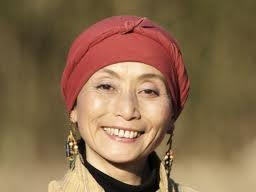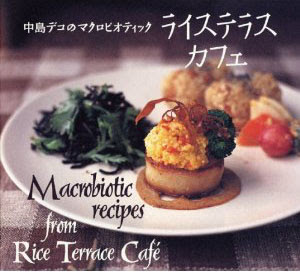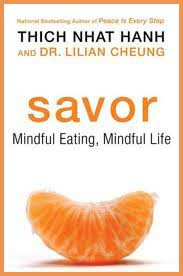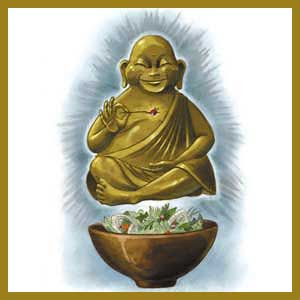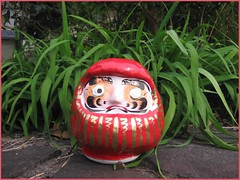[ . BACK to WORLDKIGO TOP . ]
::::::::::::::::::::::::::::::::::::::::::::::::::::::::::::::::::::::::::::::::::::::::::::::::::::
Net Super - Online Shopping
![]()
quote from Japan Times
ONLINE SUPERMARKETS
'Net super' trend food for thought
By HIROKO NAKATA
Despite the economy's prolonged doldrums and the dim outlook for conventional stores, the online supermarket business is a rare bright spot in retailing, experts said.
Following are questions and answers about the trend:
What do Internet supermarkets offer?
The services offered by online supermarkets in Japan are basically the same as those offered in Europe and the United States. Consumers place orders for food, drinks and other daily necessities on websites, and the supermarket chains deliver them to the home.
The stores' major customers are housewives in their 30s and 40s, which similar to the shopping demographic for regular supermarkets.
But online supermarkets are gaining increasing attention in part because senior citizens find it difficult to go to the supermarkets in their communities because of limited mobility.
It is estimated there are some 6 million seniors nationwide who have difficulty purchasing daily goods, according to a trade ministry report in May. Many people live in huge housing complexes built around the 1960s, when the economy was booming. Others live in remote areas in the mountains. Since young people tend to move out of these communities, so, apparently, do retail outlets.
"Online supermarkets have been growing rapidly due to the widening area for services and an increasing number of customers," said a survey released in February by marketing and consulting firm Fuji Keizai Co.
Patronage is expected to increase because some supermarkets now accept orders via fax or telephone for seniors not conversant in the use of online services.
Fuji Keizai expects the scale of the online market to expand to ¥90 billion in 2012, from an estimated ¥78.1 billion in 2011 and ¥56.9 billion in 2010.
How have Internet supermarkets evolved?
The latest trend may be exemplified by Radish Lawson, which debuted Oct. 11, combining the convenience store giant Lawson with the Radish Boya grocery delivery system.
The new service offers fresh vegetables provided by Radish Boya, which has built a reputation for offering organic vegetables and other additive-free foods.
Radish Boya has contracts with more than 2,000 farmers so that consumers can trace each item to allay any concerns they may have about the vegetables.
"Unlike many other online supermarkets that pick up products from their outlets, Radish Lawson harvests vegetables soon after receiving the orders," said Lawson spokesman Yuki Takemoto. Food can be delivered as early as three days after an order is received, he added.
Radish Lawson had 16,000 online members as of Oct. 17, Takemoto said.
The company expects sales to reach ¥10 billion in three years and ¥50 billion in five years, he said.
The online trend has been picked up by all the major supermarket chains. Ito-Yokado, Aeon, Seiyu, Daiei and Summit each have websites for food orders, while others, including Maruetsu, Tokyu and Kinokuniya, maintain online shops on Internet shopping mall operator Rakuten.
Customers usually pay ¥100 to ¥500 for each delivery, but much less or even zero for bulk purchases.
Customers can also place online orders with grocery delivery firms, including Oisix, Radish Boya and Pal System, which is run by the Japanese Consumers' Co-operative Union.
Although the delivery firms themselves are not supermarkets, they attract customers because many have strict standards of food safety. Delivery costs vary, with some charging ¥200 to ¥400 each time and others requiring an initial membership fee of around ¥5,000 and annual membership fee of around ¥1,000.
How are orders placed?
First one must determine if the supermarket of choice has a nearby outlet to handle online orders.
Usually, shoppers must register on the online supermarket's website.
Then it's merely a case of placing the order and designating the delivery time. Many grocery deliveries are on a weekly or bimonthly basis, and the timing may be less flexible.
Customers need to be careful because many supermarkets require payment even if an order is canceled. When an order is delivered, generally someone must be present to receive it. Some services require orders be placed no later than least three hours or half a day before the scheduled delivery time.
How do the services stay competitive?
Some lure customers by boasting their advantages and unique services. Ito-Yokado touts its huge lineup and network; it has about 30,000 items available and outlets that can take online orders nationwide.
Summit leaves deliveries at the buyer's doorstep if the customer isn't home. Its waterproof packages may be locked, and if cold items are involved, insulation is provided.
Daiei via its website offers customers appetizers and platter-style dishes for Christmas and other special occasions.
How did retailers expand online shopping?
"The impact Ito-Yokado had on the market's expansion was quite big," said Shigeru Yoshino, assistant manager in charge of food under Fuji Keizai's survey on internet supermarkets.
Until the major supermarket chain succeeded and logged profits in recent years, the domestic online retailing business was slumping. Other supermarkets started online services in the early 2000s, but they had trouble turning a profit due to delivery costs, Yoshino said.
Ito-Yokado found that once it had established repeat customers for fresh vegetables and prepared foods, all of which came with detailed product information, customers would increase and profits would follow, he said.
According to the survey by Fuji Keizai, other retailers followed suit and the overall online supermarket business grew by more than 35 percent in 2010.
source : www.japantimes.co.jp. October 2011
*****************************
Related words
***** WASHOKU : General Information
:::::::::::::::::::::::::::::::::::::::::::::::::::::::::::::::::::::::::::::::::::::::::::::::::::
::::::::::::::::::::::::::::::::::::::::::::::::::::::::::::::::::::::::::::::::::::::::::::::::::::
Net Super - Online Shopping

quote from Japan Times
ONLINE SUPERMARKETS
'Net super' trend food for thought
By HIROKO NAKATA
Despite the economy's prolonged doldrums and the dim outlook for conventional stores, the online supermarket business is a rare bright spot in retailing, experts said.
Following are questions and answers about the trend:
What do Internet supermarkets offer?
The services offered by online supermarkets in Japan are basically the same as those offered in Europe and the United States. Consumers place orders for food, drinks and other daily necessities on websites, and the supermarket chains deliver them to the home.
The stores' major customers are housewives in their 30s and 40s, which similar to the shopping demographic for regular supermarkets.
But online supermarkets are gaining increasing attention in part because senior citizens find it difficult to go to the supermarkets in their communities because of limited mobility.
It is estimated there are some 6 million seniors nationwide who have difficulty purchasing daily goods, according to a trade ministry report in May. Many people live in huge housing complexes built around the 1960s, when the economy was booming. Others live in remote areas in the mountains. Since young people tend to move out of these communities, so, apparently, do retail outlets.
"Online supermarkets have been growing rapidly due to the widening area for services and an increasing number of customers," said a survey released in February by marketing and consulting firm Fuji Keizai Co.
Patronage is expected to increase because some supermarkets now accept orders via fax or telephone for seniors not conversant in the use of online services.
Fuji Keizai expects the scale of the online market to expand to ¥90 billion in 2012, from an estimated ¥78.1 billion in 2011 and ¥56.9 billion in 2010.
How have Internet supermarkets evolved?
The latest trend may be exemplified by Radish Lawson, which debuted Oct. 11, combining the convenience store giant Lawson with the Radish Boya grocery delivery system.
The new service offers fresh vegetables provided by Radish Boya, which has built a reputation for offering organic vegetables and other additive-free foods.
Radish Boya has contracts with more than 2,000 farmers so that consumers can trace each item to allay any concerns they may have about the vegetables.
"Unlike many other online supermarkets that pick up products from their outlets, Radish Lawson harvests vegetables soon after receiving the orders," said Lawson spokesman Yuki Takemoto. Food can be delivered as early as three days after an order is received, he added.
Radish Lawson had 16,000 online members as of Oct. 17, Takemoto said.
The company expects sales to reach ¥10 billion in three years and ¥50 billion in five years, he said.
The online trend has been picked up by all the major supermarket chains. Ito-Yokado, Aeon, Seiyu, Daiei and Summit each have websites for food orders, while others, including Maruetsu, Tokyu and Kinokuniya, maintain online shops on Internet shopping mall operator Rakuten.
Customers usually pay ¥100 to ¥500 for each delivery, but much less or even zero for bulk purchases.
Customers can also place online orders with grocery delivery firms, including Oisix, Radish Boya and Pal System, which is run by the Japanese Consumers' Co-operative Union.
Although the delivery firms themselves are not supermarkets, they attract customers because many have strict standards of food safety. Delivery costs vary, with some charging ¥200 to ¥400 each time and others requiring an initial membership fee of around ¥5,000 and annual membership fee of around ¥1,000.
How are orders placed?
First one must determine if the supermarket of choice has a nearby outlet to handle online orders.
Usually, shoppers must register on the online supermarket's website.
Then it's merely a case of placing the order and designating the delivery time. Many grocery deliveries are on a weekly or bimonthly basis, and the timing may be less flexible.
Customers need to be careful because many supermarkets require payment even if an order is canceled. When an order is delivered, generally someone must be present to receive it. Some services require orders be placed no later than least three hours or half a day before the scheduled delivery time.
How do the services stay competitive?
Some lure customers by boasting their advantages and unique services. Ito-Yokado touts its huge lineup and network; it has about 30,000 items available and outlets that can take online orders nationwide.
Summit leaves deliveries at the buyer's doorstep if the customer isn't home. Its waterproof packages may be locked, and if cold items are involved, insulation is provided.
Daiei via its website offers customers appetizers and platter-style dishes for Christmas and other special occasions.
How did retailers expand online shopping?
"The impact Ito-Yokado had on the market's expansion was quite big," said Shigeru Yoshino, assistant manager in charge of food under Fuji Keizai's survey on internet supermarkets.
Until the major supermarket chain succeeded and logged profits in recent years, the domestic online retailing business was slumping. Other supermarkets started online services in the early 2000s, but they had trouble turning a profit due to delivery costs, Yoshino said.
Ito-Yokado found that once it had established repeat customers for fresh vegetables and prepared foods, all of which came with detailed product information, customers would increase and profits would follow, he said.
According to the survey by Fuji Keizai, other retailers followed suit and the overall online supermarket business grew by more than 35 percent in 2010.
source : www.japantimes.co.jp. October 2011
*****************************
Related words
***** WASHOKU : General Information
:::::::::::::::::::::::::::::::::::::::::::::::::::::::::::::::::::::::::::::::::::::::::::::::::::
